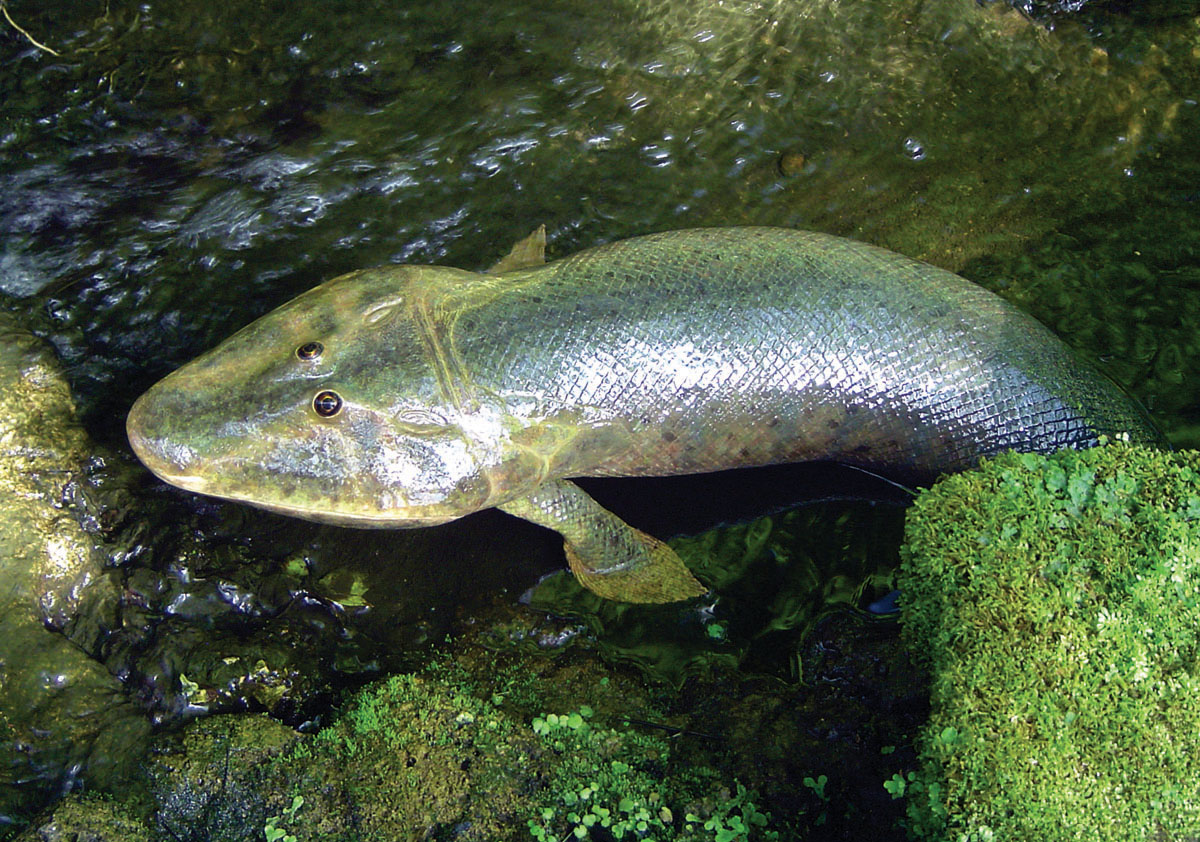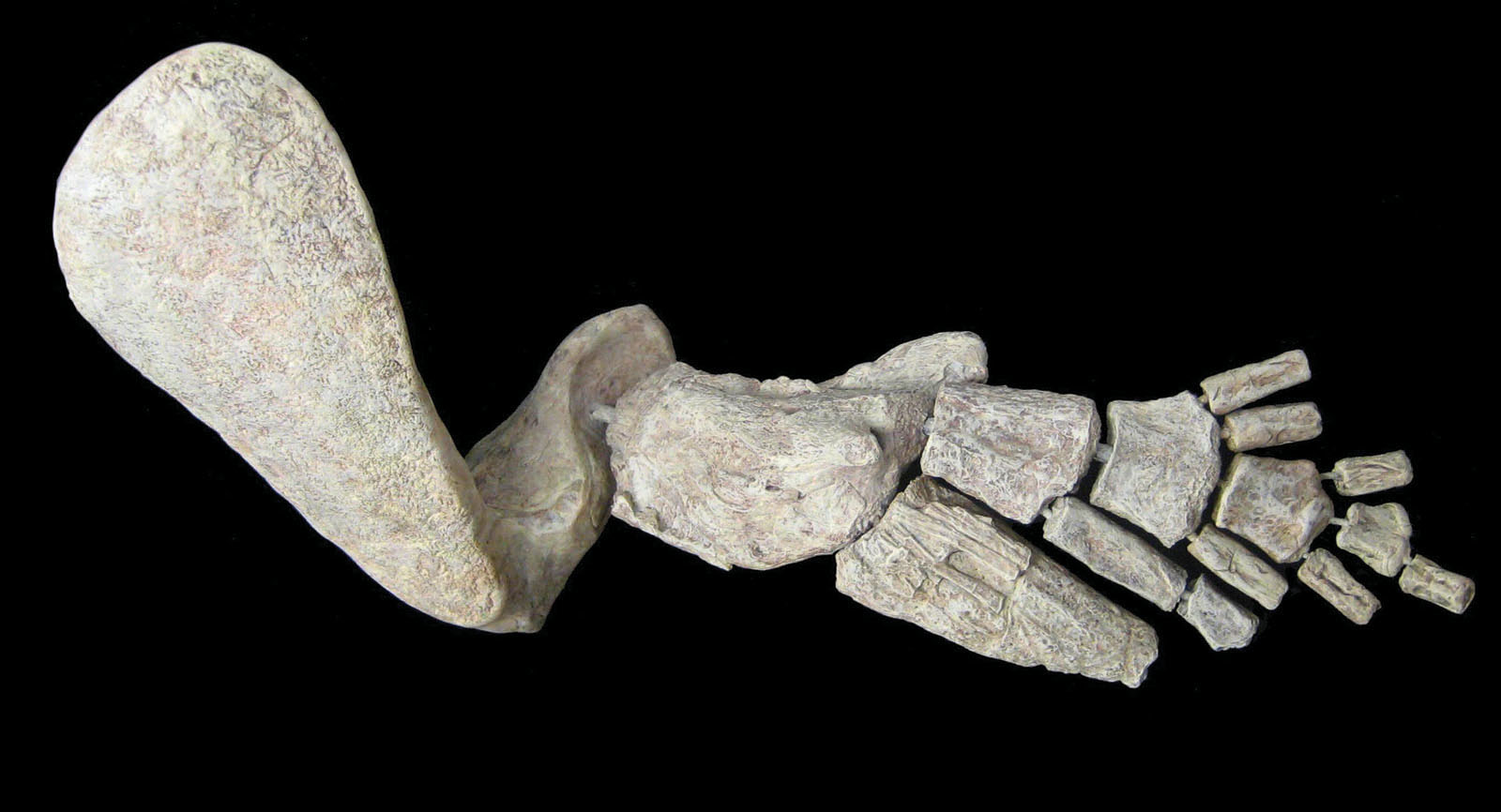SETTING THE STAGE FOR LIFE ON LAND
INVERTEBRATE An animal without a backbone.
The geologic time period that Shubin and Daeschler are interested in is known as the Devonian—roughly 400–350 million years ago. Great transformations were occurring during the Devonian: jawed fishes, sharks, land plants, and insects all diversified in this period. Because sea levels were high worldwide, and much of the land lay submerged under water, the Devonian Period has been called the age of fishes.
Back then, what is now the Canadian Arctic had a warm, wet climate and a landscape veined by shallow, meandering streams. Early in the Devonian Period there was little plant growth, and the world would have looked fairly brown and empty. By the middle of the Devonian, if you were standing on the bank of a stream you would have seen some of the first land plants, the first forests, as well as the first invertebrates—spiderlike creatures and millipedes, for example—crawling on land. Still, there would have been no land-dwelling vertebrates at this time: nothing with bony limbs, nothing with a backbone or skull.

By the late Devonian, things were changing quickly. By then, says Daeschler, “you had a green floodplain, a green world.” It was this green world—a rich and productive ecosystem, with energy-rich leaf litter flowing into shallow streams—that set the stage for the move of vertebrates onto land.
The physical challenges of living on land are very different from those in water. Water is dense and difficult to move through, but fish glide smoothly through it thanks to a sleek shape, a muscular body, and flexible fins. By contrast, animals that walk on land have to cope with gravity. Air doesn’t support animals as they move, so the bodies of land animals need a sturdier structure. Animals on land can also dry out, which is dangerous for them because cells need water to function. And, of course, taking in oxygen is different on land and in water.
TETRAPOD A vertebrate animal with four true limbs, that is, jointed, bony appendages with digits. Mammals, amphibians, birds, and reptiles are tetrapods.

Of the many features that distinguish land animals from fish, biologists have singled out one as a key evolutionary milestone: limbs. Fish do not have limbs, in the sense of jointed, bony appendages with fingers and toes. Instead, they have webbed fins. In most fishes, the fin bones are thin and fan out away from each other. These so-called ray-finned fishes include the modern-day perch, trout, and bass. By contrast, amphibians, birds, most reptiles, and mammals all have two pairs of limbs, defining them as tetrapods (from the Greek for “four-footed”).
While having limbs is a key feature distinguishing tetrapods from fish, one small group of fish—the lobe-finned fish—seems to blur this distinction. First appearing in the fossil record about 400 million years ago, lobe-finned fish have fleshy fins supported by a stalk of bones that resemble primitive limb bones.
Lobe-finned fish are thought to have evolved in shallow streams, where rich plant material lured small fish and other creatures close to the water’s edge. The lobe-finned fish likely used their sturdy fins to touch the bottom of the streambed while maneuvering to catch prey. As Daeschler explains, it was the unique ecological opportunity afforded by shallow streams that enabled the lobe-finned fish to start developing features that were adaptive in shallow water. But lobe-finned fish were still very far from being true tetrapods. Tiktaalik is a step closer: “It looks like a fish in that it has scales and fins,” said Shubin in a 2006 interview at the University of Chicago, “but when you look inside the skeleton you see how special it really is.”